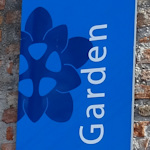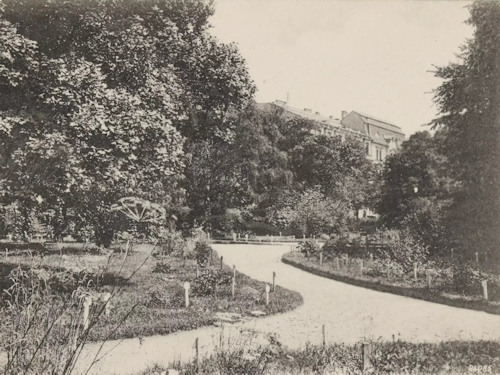
As tourists marvel at the famous Belvedere Gardens in all their baroque splendour, few know how close they are to another landscaped garden open to the public: the Botanical Garden.
- University-run public gardens with free entry
- Includes themed zones and unusual displays
- Book a two-hour walking tour* of Vienna
- See also:
- The Belvedere Gardens
- Belvedere’s Kammergarten
- The Alpine Gardens (another neighbour)
- Hirschstetten Botanical Gardens
Inside the botanical garden

(An entrance to the not-so-secret garden)
The park runs along to the east of the Belvedere complex and can trace its roots (ba dum tish!) back to 1754 and a pharmaceutical garden established by Empress Maria Theresa.
A couple of trees still remain from the early days. For example, the giant 18th-century plane tree that sticks out into Renngasse at the southernmost edge of the complex.
The Botanical Garden is actually a research, teaching and public education facility belonging to the University of Vienna, which has adjacent premises housing related departments.
Where Belvedere’s gardens end in ornate palaces, these gardens end in ordinary greenhouses (which means more glass, less marble, and fewer statues of 18th-century military heroes).
The big advantage of the university gardens is they offer a little more breathing space than their imperial rivals, given that far fewer tourists find their way inside.
The highlights

(The botanic gardens in a photograph from before 1905 produced by the Deutsch’s Postkartenverlag; Wien Museum Inv.-Nr. 183388; excerpt reproduced with permission under the terms of the CC0 licence)
The gardens consist of numerous themed zones, such as “Flora of Austria”, “Medicinal, domestic and poisonous plants” and “Cacti and succulents”. The entire middle section covers displays of plants based on systematic principles, i.e. grouped according to their genetic relationship with each other.
If that sounds all rather dry, it isn’t.
To put it concisely: it’s a pleasant walk around a park with more to offer than your average municipal facility. Particular highlights for me on my visit were:
- Two huge giant sequoia trees
- A thick copse of green-glaucous bamboo (Phyllostachys viridiglaucescens), with stems several metres high. If the boardwalk through the copse is open, you can wander through and listen to the knocking of the stems in the wind
- The Chilean rhubarb (Gunnera tinctoria) with its giant leaves
- A pond full of sacred lotus (Nelumbo nucifera), whose leaves are incredibly water resistent so drops retain their form on them
- A mini showcase full of carnivorous plants (and one unfortunate fly, who was in considerably more danger than it could ever imagine). Several other showcases dot the facility – one, for example, featured “living stones” – and the gardens include a small tropical plant house
- The cactus and succulent group: some quite impressive specimens in there
(A plant labelled “Naked ladies” turned out to be less exciting than you might imagine.)
Tickets & visitor tips
Entry to the Botanical Garden is free and it’s open more or less every day (closing from late December to early January and if weather conditions are unsuitable). Check the university website for full details on opening hours, as well as background information on the history and contents.
For more botanical garden fun, try:
- Hirschstetten botanical gardens: also free and also full of themed areas (most outdoor areas take a break in the colder parts of the year, though)
- The Alpine Gardens: a small and separate facility at the top of the university gardens. Remarkably, it houses an excellent bonsai collection
How to get to the Botanical Garden
Follow the directions for Upper Belvedere, then:
- Go to the south gates and walk east a few metres to reach a double entrance. Right is the Alpine Gardens, left gives you access to the top of the Botanical Garden
- If you’re at the Upper Belvedere palace itself, go to the east end of the building and continue further east. Look for a raised building: just to its north behind a hedge is another entrance (the Reitertor) leading from the Belvedere grounds into the middle section of the gardens
Follow the directions for Lower Belvedere, then:
- On reaching the palace entrance, don’t go in but walk southeast along Rennweg road for another 400 metres or so and you’ll see Praetoriusgasse on your right. Go down that street and it takes you to the main entrance to the gardens
Address: Mechelgasse/Praetoriusgasse, 1030 Vienna